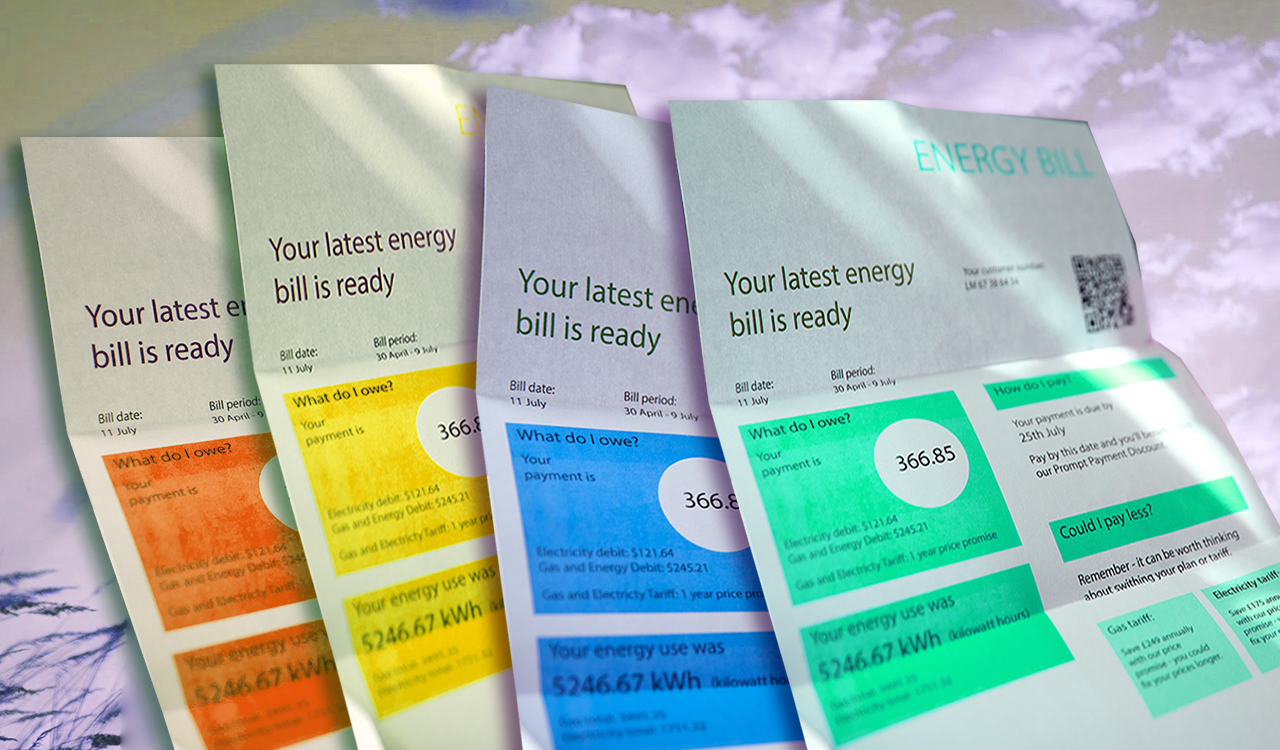
Seventeen days remain until the new colored electricity tariff is implemented, which starts from 1the January 2024 providers will have to make them available to consumers.
Attention is focused on the much-lauded “green” tariff, the special electricity tariff that the political leadership of the Ministry of Environment and Energy has forced all electricity providers on, without exception.
The Waste, Energy and Water Regulatory Authority made the announcement following its first checks on data published by service providers on 1the December and relate to prices, mathematical formula and other criteria of the “green” tariff.
7 Mayday
The Financial Supervision Authority issued seven recommendations and instructions to service providers to implement the special (green) tariff, which were referred to in 1the January 2024 The final electricity prices were supposed to be announced:
- Complete and transparent information for consumers
The first recommendation addressed to service providers by RAAEF is to oblige them to inform their customers of the contract terms and tariffs of the electricity programs that will be effective as of 1the January.
Regarding the special or green tariff, consumers must know the amount of the basic supply price (the initial price of electricity based on the provider’s costs and profit margins), the fixed charge (the known fixed charge which should not exceed 5 euros per MWh), the values of the variation mechanism parameters ( Mathematical formula that comes into play when the provider does not accurately forecast the price of electricity) and the amount of discounts offered to be applied from 1the January 2024.
In detail, RAAEF reports:
“Suppliers are obligated to inform their customers about”Contractual and pricing terms for supply products that will be applied as of 1Ha January 2024“, in all comprehensiveness and transparency.
Providing adequate information to consumers, so that they can make informed choices that best serve their interests, requires timely knowledge of the terms of supply of private invoices. In particular, consumers have the right to know the amount of the basic supply price, the fixed fee and the prices of the volatility mechanism factors and the amount of the discounts offered that will be applied as of January 1, 2024. Consumers also have the right to know the time and conditions under which suppliers may adjust the amount of the above-mentioned parameters and factors.
Failure to include the above applicable customs tariff standards and coefficients in information documents causes confusion for consumers, weakens their fundamental right to freedom of choice and undermines the effectiveness of the special tariff.”
- Avoid misleading comparisons
The second recommendation that the RAAEF directs to providers, and should therefore be taken into account by consumers, states that if a comparison is made between a green bill and other colored bills, they must provide the assumptions for each type of bill in detail.
In detail, the RAAEF states: “In order to transparently inform consumers, suppliers making comparisons between own invoice and different types of invoices should detail the assumptions they have taken into account for each type of invoice.
It is worth noting that any comparison made on the basis of prices formed during one month in 2023 may lead to incorrect conclusions.
The Authority is responsible for monitoring the selection of the correct basis for comparison and verifying the accuracy of the resulting fees.”
- Prohibit the entry of additional parameters
RAAEF clarifies that in addition to the above-mentioned criteria which it is obliged to announce and apply to the special or “green” tariff, it is not allowed to add any others. Either it is an element of the adjustment mechanism or it is another form of deduction.
In detail, the RAAEF reports: “The tariff conditions governing the ‘Special Tariff’ are detailed in Ministerial Decision ΙΠEN/DΕ/120637/2107, which lists in a restricted manner the parameters of the ‘Special Tariff’ (fixed) duty, basic supply price, type and parameters of the variation mechanism as well as discounts.” On the basic supply price). The comprehensive reference to the tariff conditions in the ministerial decision serves the ease of comparison between the special invoices to be submitted by suppliers and is also the main goal of the legislator.
It is not permissible to add additional controls to the tariff conditions other than those mentioned in the ministerial decision.”
- Regarding the right to object to the transfer to the special tariff.
From 1the In January, those who have not chosen one of the colored tariffs must switch to the “green” or special tariff. According to the Financial Services Authority, they have the right to object until January 31, 2024. The right to object is not retroactive, the authority explains:
“In accordance with what was stipulated in Paragraph (3) of Article (5) of the Ministerial Decision, “The consumer’s objection to the conversion to the special tariff and remaining in the supply contract, which was suspended due to the application of Article 138 of Law 4951/2022, may be submitted until January 31, 2024, after making the objection to paragraph 6 of Article 138a of Law 4951/2022.”
With regard to the application of this regulation, and after clarification in this regard from the regulating legislator, i.e. the Ministry of Environment and Energy, exercising the right to object is not considered to have retroactive effect and therefore suppliers must, during the days prior to exercising it, invoice their customers for the special invoice fees, which they consider they have transferred during the time period preceding their objection. . Invoices are issued according to the new tariff chosen with the objection for the period following the objection.
- Regarding the possibility of amending the tariff conditions.
The RAAEF also determines when prices and other parameters of green or private electricity tariffs should change.
The fixed price can change every month, is applied to the first consumption bill after the change, and must be announced on 1the Of the month.
The basic price of electricity supply can be changed every six months, but is announced two months before the change.
The discount on the base offer price can change every month and is announced on the first daythe Per month.
The adjustment mechanism transactions will be subject to change every quarter and will be announced one month before the change.
RAAEF report in this regard:
“In order to facilitate the understanding of consumers, the table below shows the frequency and procedure for adjusting the tariff conditions of the special tariff in accordance with current legislation.
It is noted that the supplier may commit to providing pricing terms for a longer period of time and this commitment is understood as best practices that guarantee the rights of consumers and establish a relationship of trust.
As for the other tariffs marked in blue (fixed) and yellow (fluctuating), which are subject to the provisions of the Electricity Supply Law and under No. E-160/2023 of the Financial Supervision Authority’s decision, it should be noted that the tariff conditions are valid throughout the duration of the contract and may not be amended except for an important reason and on the condition of adhering to the consumer notification process, i.e. through individual notification two months before the intended change.”
The table shows the special tariff features
Note that “a” is the increment factor, “Lu” is the upper bound for non-activation of the readjustment mechanism and “Li” is the lower bound for non-activation of the readjustment mechanism.
- Regarding the brands of electricity supply products.
With the sixth recommendation, the color coding of electricity tariffs became known:
“Fixed price products are highlighted in blue, special invoices in green, other floating price display products in yellow and dynamic pricing products in orange. Transparency markings are clearly displayed on the first page of the consumption invoice, as well as on all standard forms of the supplier, on its site Online and promotional actions.
- Notifying consumers monthly of the FSA special invoice final supply price
Service providers must announce the final price of the special or green electricity tariff every 1the Of the month. Providers must submit it to the FSA no later than 1the Day of every billing month until 23:59. The Regulatory Authority will publish a comparison table between service providers by the fifth day of every month.
In detail, RAAEF reports:
“In accordance with the provisions of the framework text (paragraphs 1 and 2 of Article 5 of the Ministerial Decision), the Financial Supervisory Authority will announce on its website In the form of a table, By the fifth day of each month, the final supply price of the respective invoice, based on data sent by suppliers no later than the first day of each month invoice at 23:59.
The possibility of comparison with tariffs whose price is determined after the month of consumption (volatile – yellow) will be activated as of March 2023.
Therefore, consumers will be able to compare each type of tariff offered taking into account any individual circumstances (volume of consumption, discounts on consistency, etc.) and extract data to rank products from cheapest to most expensive.
In continuation of the above, we call on electricity suppliers to strictly adhere to the provisions of the framework text and the explanatory instructions provided by the Ministry of Health and the Authority, compliance with which is in the interest of consumers and the market as a whole.
The Free Syrian Army, within the framework of its powers, continuously monitors the implementation of the institutional framework, issues positive reports and announcements on a case-by-case basis, and imposes corresponding deterrent sanctions.”
source: ot.gr

“Avid problem solver. Extreme social media junkie. Beer buff. Coffee guru. Internet geek. Travel ninja.”




More Stories
The Russian shadow fleet threatens Sweden
Emergency Easter gift of up to €1,500 – paid retroactively today to 59,000 families – beneficiaries
How will the POS cap work?